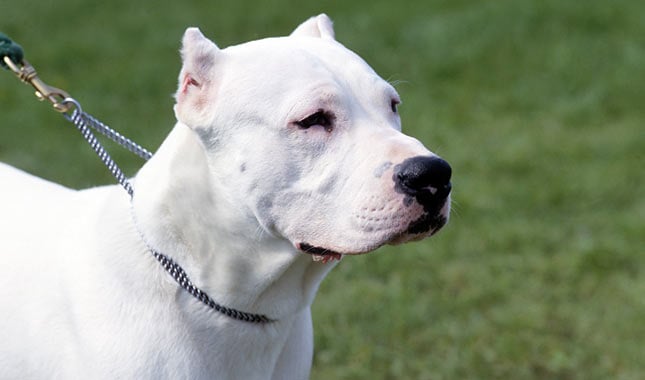Newfoundland Dog: What You Need to Know

Probably the biggest reason some people might not bother with the Newfoundland dog breed is simply that it is not a dog breed they can pronounce. There are those who swear that it is pronounced precisely as it is written “New-found-land,” and others who claim this is incorrect and that the dog breed is pronounced “Newf-in-land,” and there are still others who state that the dog is a “New-fun-land,” and will not listen to any other reason. As for us, we just are not certain since everyone has a different opinion; call the Newfoundland what you please, just call it your own and provide this gorgeous dog with a forever home.
However, before you bring a dog that cannot be pronounced home to call your own, get to know the breed a bit first. A Newfoundland is a wonderful dog – no matter how you say it – and it’s a great family pet. However, your family might not be right for this dog and it might not be right for you. Know what to expect with the Newfoundland before you bring it home. It’s so important to familiarize yourself with the breed before you call it your own.
Personality and Temperament
Courageous and oh-so-sweet, the Newfoundland is a wonderful friend. This beautiful dog is very intelligent, and it’s very calm and patient. You will not find this dog doing much jumping or running around while it waits for you to hurry up on a walk. Rather, you will find that it patiently waits for you to begin and it has no problem with being an animal that allows you to take full control of any situation. This is a very loyal breed with a wonderful disposition, and it’s great with kids. The Newfoundland is big, yes, but that does not detract at all from its very gentle nature and very peaceful personality.
Very protective, this is not a barking dog. If this dog is barking, take note because there is a good reason. Another great advantage of having a Newfoundland at home is that you will never worry that this dog will attack. It is not an aggressive dog by nature at all. In fact, even if someone were to break into your home, this is a dog that would just corner it and scare it rather than attack. All kids, adults and friends with great personalities and good hearts will find that this dog loves them and is very happy to spend time with them. The Newfoundland is a wonderful dog, but it does require that you are a natural leader. It gets along well with other animals, it does drool a bit after it has some water, and it is a huge fan of swimming if you have a pool or a love of boating.
Lifestyle and Expectation
Because the Newfoundland is such a large dog, many people are quite curious as to what they might expect from the breed. Is it loud and boisterous? Does it require a lot of exercise? Is it a dog that needs a lot more space? What you should know is that Newfoundlands are actually not bad in small homes or apartments. As long as they are taken on a long walk and given moderate exercise opportunities throughout the day, they are just fine; a bit lazy, perhaps, when they are indoors. However, anyone who lives in a warm climate will find that this is not a dog to have. I, for instance, could never have a Newfoundland in Florida since it is always warm – hot, actually – and this breed does not do too well in hot climates and temperatures. They require cool air and shade.
As far as size is concerned, you’ll need to be prepared for a large dog if you choose to make a Newfoundland the new family pet. It’s large; standing as tall as 29 inches and weighing as much as 150 pounds. Females are a bit on the smaller side, but not by much so you’re getting a large do no matter how you look at the Newfoundland. On average, this breed lives around 10 years. It does need a daily walk and some play time, but it’s lazy indoors. As far as health is concerned, the Newfoundland is prone to something called sub-aortic stenosis, a heart disease that is hereditary. Additionally, it is prone to hip dysplasia and it’s known to eat more than it should when it’s offered more food. What this means is you need to be careful how often you feed your Newfoundland for fear that he might gain too much weight and end up suffering from health issues related to obesity.
Breed History
Newfoundlands are dogs that are directly related to the Vikings. Well, their dogs, anyhow. The Vikings had some nomadic dogs that they referred to as bear dogs, likely because of sheer size. These dogs are thought to have produced the Newfoundland that we know today – though some believe that it was possibly derived from a Labrador, as well. There are a few different theories; one is that the dog is related to the Tibetan Mastiffs that European fisherman brought to the US and then allowed to roam free and reproduce as it felt appropriate. Others believe that Labradors were able to swim the Strait of Belle Isle and breed with other dogs, and then there are those who feel that the Newfoundland is a relative of a Labrador that was paired with a St. John’s Water Dog.
The stories are numerous, and there is no factual story as to where the Newfoundland got his start. However, they were dogs that were used for many years to do water work. They hauled nets for the Vikings, they pulled sheds, hauled lumber and even worked as rescue dogs in case anyone ever fell overboard a ship, was lost at sea or was drowning. Today, they still love to swim and they are still very lazy unless they are doing that or enjoying a walk with the family.
Photo by Getty Images






